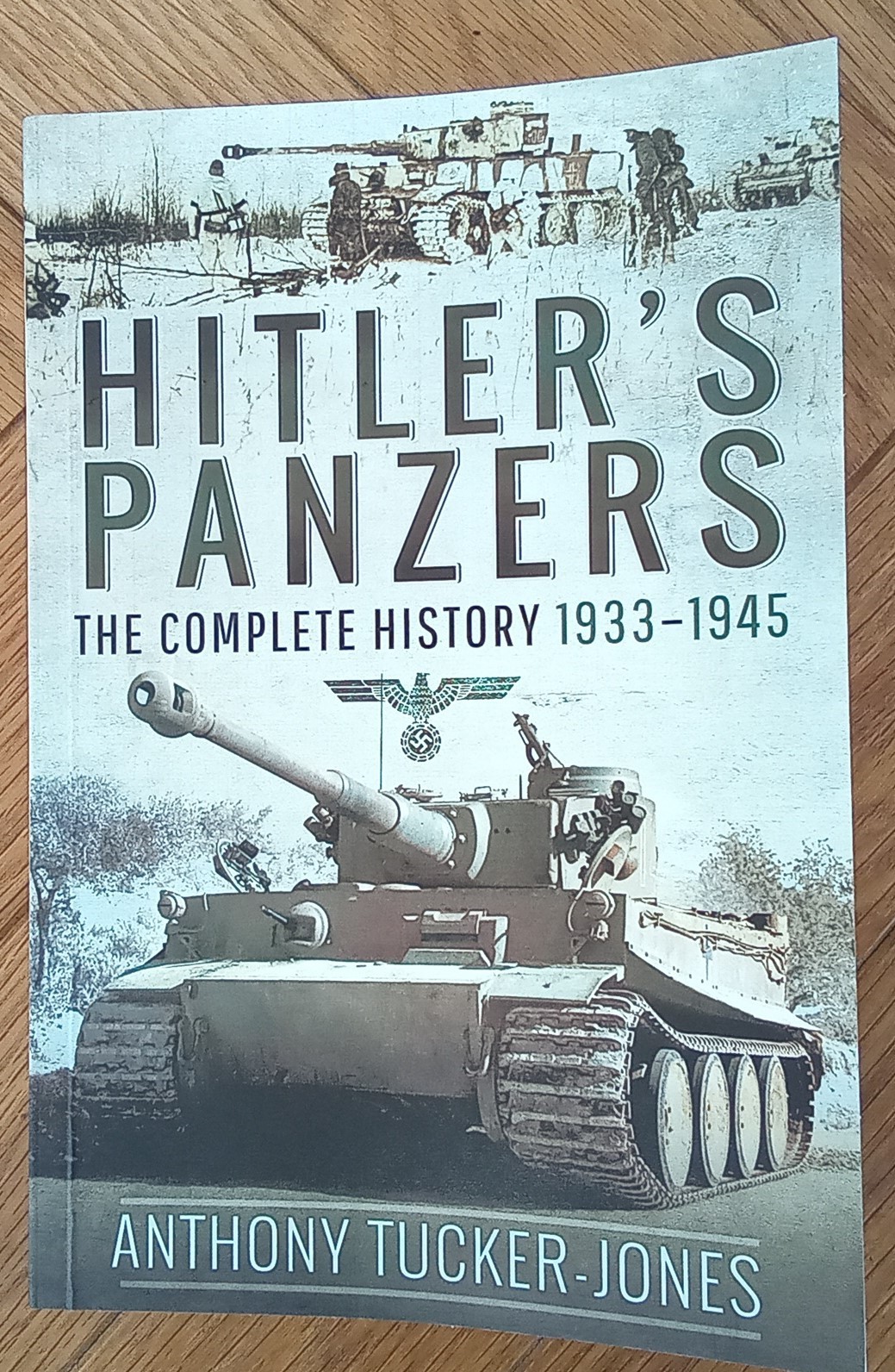From Pen and Sword books, by Anthony Tucker-Jones, 229 pages all inclusive, with 60 black and white photos.
I reviewed this as I was intrigued at the premise, "the complete history 1933-1945", oddly the dates are in a different colour to the words. Not sure why, but it would suggest there is / will be another volume covering another time period. At a scant 169 pages of narrative, with photos, plus appendices, I'd describe this time more as a very good introduction to Hitler's panzers from 1933 to 1945. There have been innumerable books published about specific vehicles, ie Tiger, Panther, that it is simply not credible to cover the subject in less than 200 pages unless it was bullet points throughout, with fine print. This is not that book.
Well researched it suffers from poor editing in parts punctuation being the main gripe. The information and analysis is there, as well as some great commentary, supported by figures where relevant; the narrative flows easily, and I read this within the week. But I frequently found myself re-reading a sentence to make it make sense because of poor punctuation. And I am no English scholar.
The book got off to a shaky start in the first few chapters where, at page 27, in discussion about up-gunning the fledgling panzer force, the need for a tank gun capable of killing other tanks, "Another version of the 50mm KwK39/I L/60 featuring a muzzle brake was used to arm the eight-wheeled Sd Kfz 234/3 Puma armoured car." It was the /2 "Puma", not the /3, which featured a 7.5cm L24 gun.
The book is balanced and apolitical, and if there was a theme around Hitler's panzers, and this is repeated throughout the book, it was that Hitler was constantly looking for the next best thing, whilst Heinz Guderian, one of the founders of the Panzerwaffe, was constantly exhausted with changing design specifications, fractured manufacturing, competing demands, rushed design and production, and too little resource to match it all. Not to mention the ongoing friction between the two men that comes through in the text.
There is some humour in the book, too; I did chuckle at, "This delay often meant that Allied tanks were able to get off a first shot, though it was often their last." when discussing the slow turret rotation of the Tiger, p. 52. And, p. 74, "To the initiated the Panzer I looked little better than a glorified lawnmower when compared to what the French and Soviets were producing. [sic]"
I was similarly amused at the exploits of "panzer ace SS-Sergeant" Ernst Barkmann commanding Panther 401 who got lost and drove alone onto Highway N15, Ardennes, page 152, paraphrasing here, Barkmann drove through an American tank depot unscathed, and when pursued, rotated his turret to the rear and picked off his pursuers. Barkmann estimates he passed 80 American tanks. And I have no reason to not believe that.
And, I did not know this, five Ferdinands were present to the south of Bastogne; and, a T 35 was used in the defense of Berlin, 1945. Now that would make for an interesting dio.
The use of numbers throughout the book is a feature, particularly around German production vis-a-vis Allied (Russian) production, where Germany produced 100 of a tank, the Russians produced 1000; where Germany had several different types of tank, the Russians had two, where Germany lost a couple of tanks, the Russians lost dozens.
The book is broken down into Part I: Designing tractors; Part II Off to War; Part III: Sturmgeschutz Not Panzers; Part IV Wasted opportunities. Then, Appendices, bibliography, and index.
The appendices include coverage of Panzer production, panzer and panzer grenadier divisions, then a breakdown of panzer variants by panzer type, ie Panzer I variants, Panzer II variants, etc.
In summary, a very worthwhile and readable book on an interesting, if very complex, topic; credit to the author, he does not go down any particular tangent or sideline, and keeps the narrative fairly tightly focused on the subject at hand, Hitler's panzers 1933-1945. Thus, easily recommended.

